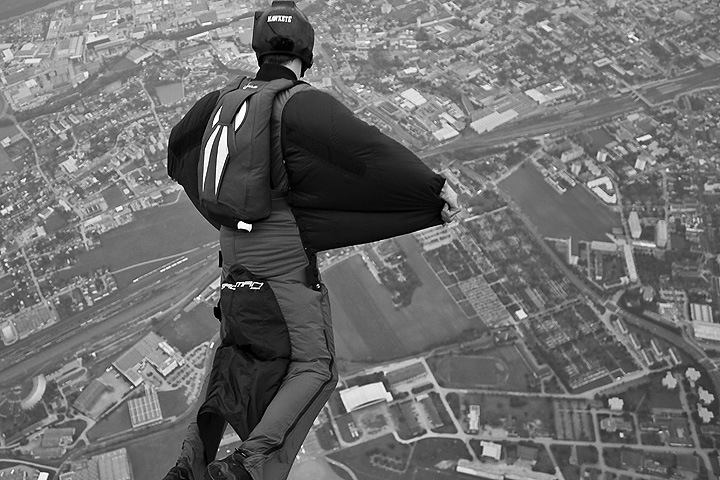Wingsuit physics

Credit: Thomas Kremshuber
Fly like a bird with a soaring suit and a little bit of science
After leaping out of a plane, skydivers fall to the ground at almost 200 kilometres per hour, making their entire descent a bit of a blur. However, by putting on some clever parachute-like clothing, they can slow down their dive and regain some control, enabling them to soar horizontally as well as vertically and perform some impressive aerial acrobatics.
By wearing a wingsuit, a skydiver transforms themselves into a giant wing, with their body acting as the rigid framework, and the fabric between the legs and beneath the arms creating a large horizontal surface, or airfoil. After leaving the plane, the jumper’s weight pulls them down, but as they spread their arms and legs, air resistance created by the airfoil generates lift, slowing down their rate of descent. To glide horizontally, they must then bring their arms in a little and keep their head low to reduce drag, the force that opposes forward momentum. While the suit is able to slow their descent to less than 100 kilometres per hour, this isn’t slow enough for a safe landing, and so a parachute must be deployed to reduce speed before they reach the ground.
This article was originally published in How It Works issue 92, written by Jo Stass
For more science and technology articles, pick up the latest copy of How It Works from all good retailers or from our website now. If you have a tablet or smartphone, you can also download the digital version onto your iOS or Android device. To make sure you never miss an issue of How It Works magazine, subscribe today!




